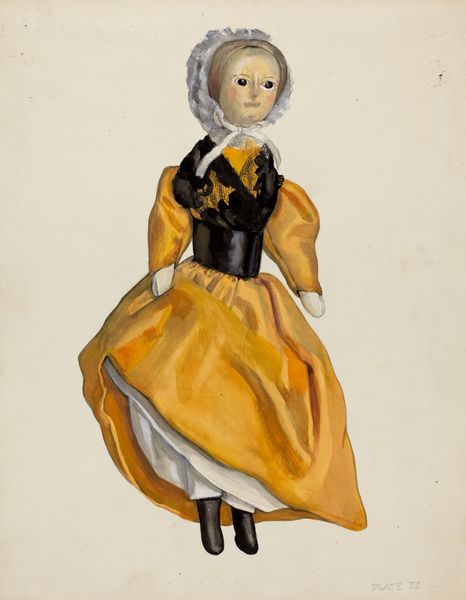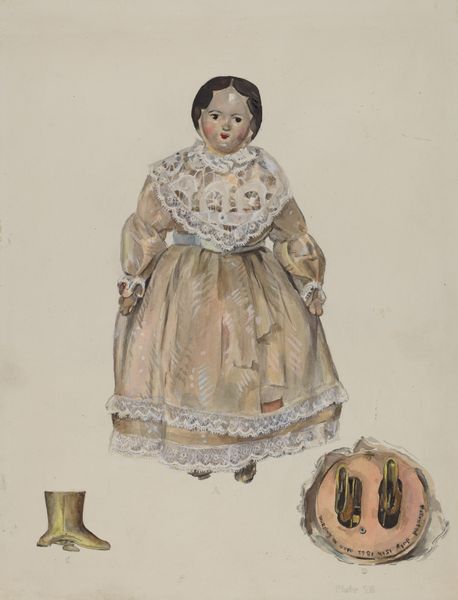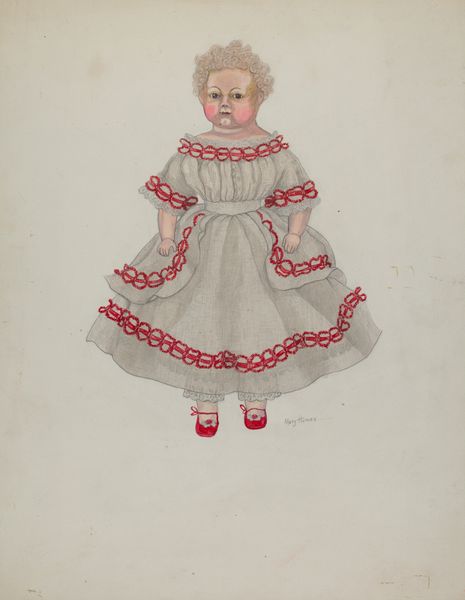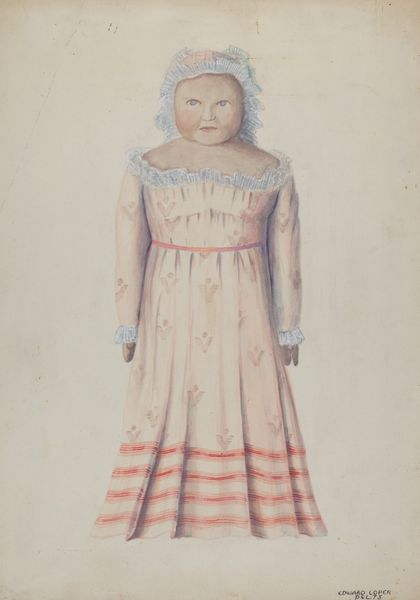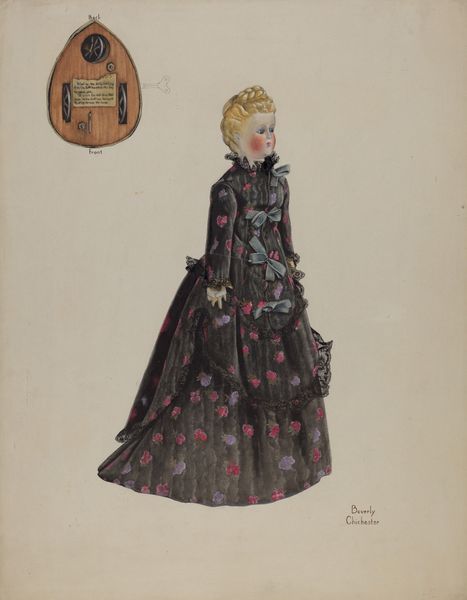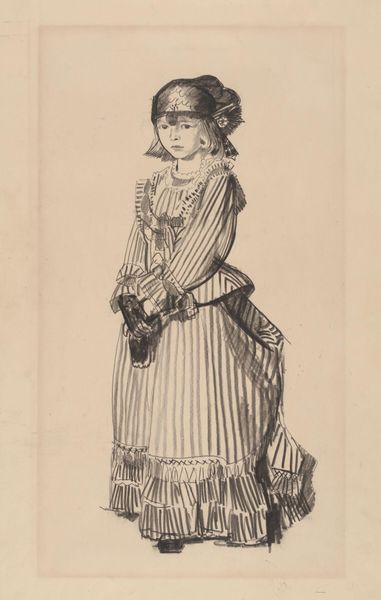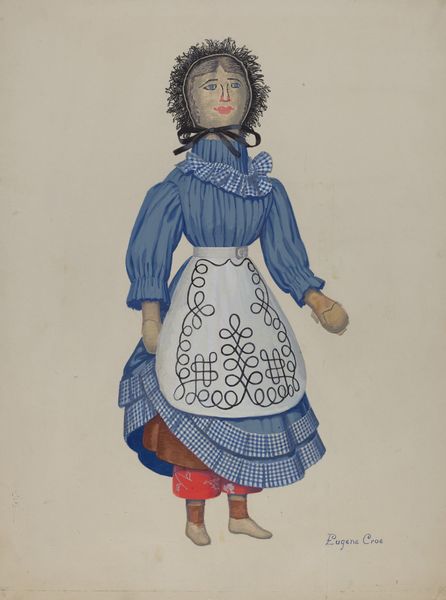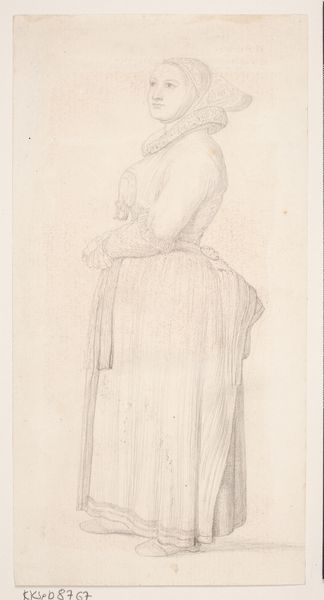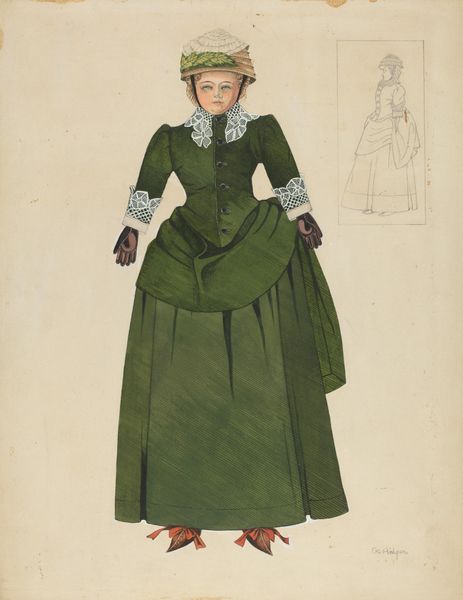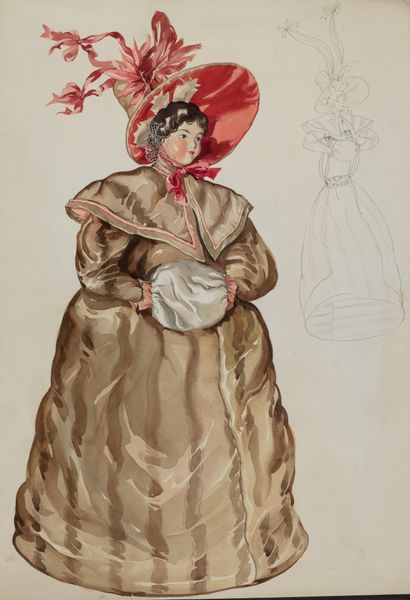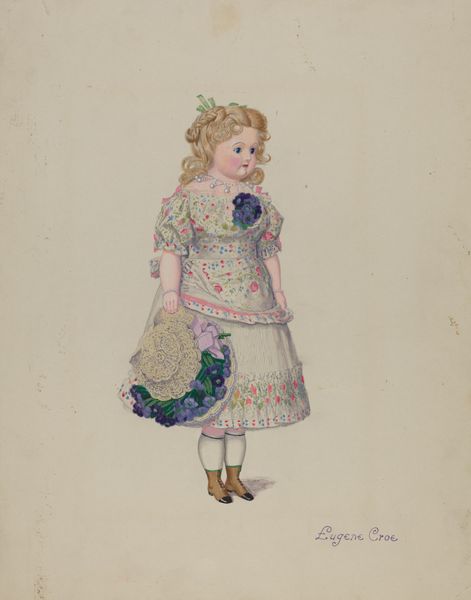
drawing
#
drawing
#
caricature
#
charcoal drawing
#
portrait reference
#
portrait head and shoulder
#
animal drawing portrait
#
portrait drawing
#
portrait art
#
fine art portrait
#
celebrity portrait
#
digital portrait
Dimensions: overall: 53.9 x 41 cm (21 1/4 x 16 1/8 in.)
Copyright: National Gallery of Art: CC0 1.0
Editor: This is "Doll," a drawing from around 1936. There's a stillness to it, a kind of contained energy, even though it's just a drawing of a doll. What strikes you about it? Curator: The doll's costume certainly tells a story, doesn’t it? The black dress, the lace… What does this evoke in you, looking at it? Editor: A somberness, almost Victorian. Was black such a common color for dolls then? Curator: It wasn't just a color, it was a signifier. Black clothing in that era often linked to mourning, to remembrance. The doll, therefore, embodies memory. What happens when we consider a child playing with a symbol of grief? What could that represent? Editor: Maybe grappling with loss? Or preserving a connection to someone who’s gone? The doll becomes more than a toy. Curator: Exactly! It's a vessel of cultural memory, a focal point for emotional continuity across generations. Notice, too, the lace: delicate yet restraining. Does it contrast with the darkness? Editor: Yes, it lightens the heaviness a bit. It’s almost like a bittersweet reminder, or maybe a sign of hope? Curator: Perhaps. Consider how our relationship with dolls and other effigies continue in other art, carrying symbolic weight—replicas and copies become vessels, filled by projections from ourselves and society. Editor: That makes me look at the doll, and all similar representations, completely differently! It’s less about the surface and more about the collective emotions and stories we project onto them. Curator: Precisely! The doll invites reflection beyond mere aesthetics, entering realms of history, memory, and psychology. It really helps us to reframe other imagery as well.
Comments
No comments
Be the first to comment and join the conversation on the ultimate creative platform.
